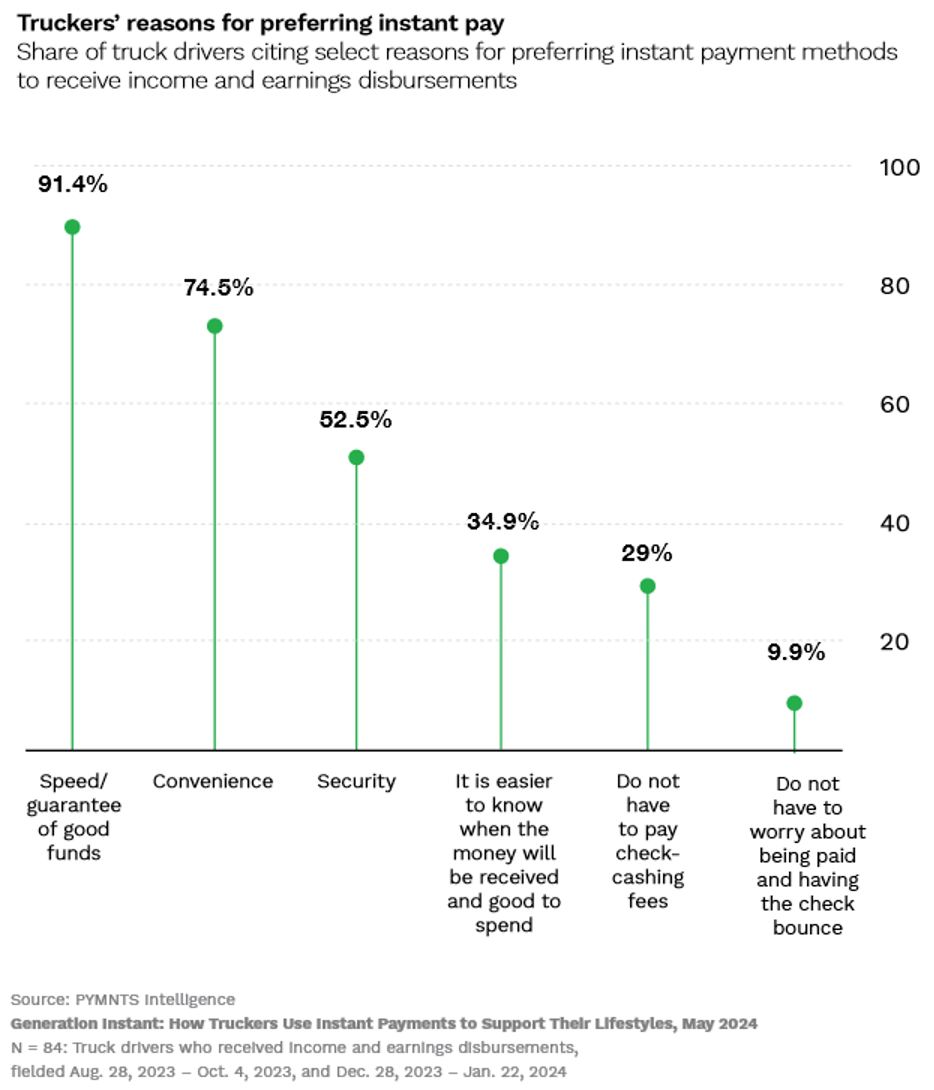
If any U.S. consumers are wondering why their packages are late, the answer might be because there simply aren’t enough truck drivers manning 18-wheelers and delivering goods.
According to the American Journal of Transportation (AJOT), right now there is a national shortage of truckers in the country of more than 80,000 drivers. And, according to AJOT, this shortage is expected to grow to 160,000 drivers by 2030.
AJOT offers up a number of factors that have contributed to the national shortfall: a highly-competitive job market, older drivers retiring, current truckers leaving the industry to find better pay and working conditions, and younger prospects considering different career paths.
But PYMNTS Intelligence data reveals another possible reason for high turnover in the industry: in many cases, drivers are expected to supply their own trucks and pay for maintenance and gas out of pocket, which can put a strain on their finances.
This might be why AJOT suggests higher wages are in order to woo new workers to the industry while making sure the current ones remain in their driver’s seats.
Another incentive employers may want to consider is offering truck drivers a faster and more efficient way to get paid. According to “Generation Instant: How Truckers Use Instant Payments to Support Their Lifestyles,” a PYMNTS collaboration with Ingo Payments, only 41% of drivers now get their income and earnings delivered through instant payment methods, but 91% of those that do say they prefer the speed and peace of mind instant payments offer.
What’s more, many truckers would be willing to pay a fee to get access to their funds sooner, according to the study. More than a third would pay to have instant payments, slightly more than consumers as a whole group.

The study’s findings dovetail with last month’s Federal Reserve report, “Survey of Household Economics and Decision Making,” which shows that consumers have a growing affinity for receiving payments instantly when given the option.
That report itself echoes a PYMNTS Intelligence study from November and shows consumers are flocking to instant payments.
Of the truckers who prefer instant payments, our study shows 75% of truckers say they prefer instant payments primarily because of convenience. (Worth noting: Those who selected non-instant payments were 52% less likely to say convenience is a factor in their payment decisions.)

As the figure above illustrates, knowing that good funds will be received and available as promised drove 35% of truck drivers to choose instant income disbursements when they were available.
Meanwhile, more than half of truckers say security is the reason they choose to get paid instantly. In fact, four times more instant payment users than non-instant users cite security. Such stark differences in why truck drivers favor instant payment options further suggests that their use of real-time disbursements would grow if more employers offered it as an option.
As we concluded in “How Truckers Use Instant Payments to Support Their Lifestyles,” truck drivers play a crucial role in the U.S. supply chain, and minimizing industry turnover is essential. Because many drivers are expected to supply and maintain their own trucks and pay for fuel, even a short delay in receiving funds can impact a trucker’s financial stability.
If employers want to recruit and keep truckers in their fleet, offering instant payouts might be a low-cost method to achieve that goal.